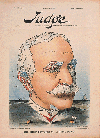
PART IV: PUBLIC MEMORIES
21. PUBLIC DEBATE IN SPAIN
The traumatic impact in Spain of the military defeat of 1898 started a chain reaction of public criticism and intellectual introspection that had a major influence on Spain’s evolution throughout the twentieth century. The constitutional monarchy of the Restoration (1875–1923), and the domestically powerful military establishment, survived the first wave of accusations of incompetence in handling what became widely known in Spain as "El Desastre del 98" (The Disaster of 1898). However, among the general public and especially the organized working class and in regionalist quarters, the resentment and dissent fomented by the events of 1898 increased. For their part, intellectuals sought to understand Spain's "decadence" and to find ways to "regenerate" it. This collective attempt at regeneration was called the "regenerationist" (regeneracionista) movement. Although grouped collectively as the "Generation of 1898," the intellectuals responded in various ways, from extreme conservatism to extreme radicalism. The events of 1898 had thrown Spaniards' nineteenth-century identity and self-confidence out of balance, and the country’s democratic aspirations had been seriously damaged.
22. PUBLIC DEBATE IN THE UNITED
STATES

In the immediate aftermath of the Spanish-American War, public debate flared
in the United States between advocates of expansionism and of anti-imperialism.
Expansionists presented a scenario of military conquest. They warned of pending
domestic political disaster, of negative international consequences for the
future of the nation, if a firm policy was not pursued for the "new possessions."

The anti-imperialists were a motley group opposed to annexation of the former Spanish
colonies for several, often contradictory, reasons. Some anti-imperialists (Carl Schurz,
Andrew Carnegie) argued that the former Spanish colonials were culturally or racially
unfit to participate in the U.S. form of government. Others (Edward Atkinson, Samuel
Gompers, Edward Ordway) cited the transgression of U.S. constitutional, political, and
moral traditions, and still others (Mark Twain) opposed the adoption of a European-style,
abusive imperialism.

This movement grew considerably at the time of the Philippine-American War, but
anti-imperialists were no match for the popular expansionist thrust after the reelection
of President William McKinley, with Theodore Roosevelt as Vice-President, in November
1900. Other postwar debates concerned heroic actions, medals, and the public image of
major military and political figures.
23. CELEBRATIONS AND COMMEMORATIONS
The negative aspects of a war eventually blur in the collective memory of the victorious nation. The selective process of public memory of the Spanish-American War began with the ritual celebrations by masses of citizens who experienced the war from afar but expected to share in its rewards.
 Public memory was reinforced by the creation of symbolic "sacred"
spaces in the form of public memorials and monuments. These basic, time-tested,
and powerful demonstrations of successful patriotism served a long-range purpose:
to capture the patriotic imagination of future generations and to instill in
them a distinct and, ideally, permanent sense of the significance of the war
and its heroes for the nation. Some of these symbols stood the test of time
to remain relatively dominant in the collective psyche, as in the case of the
Maine and its monumental and cultural representations. What makes communities
remember these but not other symbols of the war? Patriotic and, in general,
human behavior, so well explored by public appeals campaigns during the war
itself, are at the root of this consolidation of public memories.
Public memory was reinforced by the creation of symbolic "sacred"
spaces in the form of public memorials and monuments. These basic, time-tested,
and powerful demonstrations of successful patriotism served a long-range purpose:
to capture the patriotic imagination of future generations and to instill in
them a distinct and, ideally, permanent sense of the significance of the war
and its heroes for the nation. Some of these symbols stood the test of time
to remain relatively dominant in the collective psyche, as in the case of the
Maine and its monumental and cultural representations. What makes communities
remember these but not other symbols of the war? Patriotic and, in general,
human behavior, so well explored by public appeals campaigns during the war
itself, are at the root of this consolidation of public memories.
Introduction | Chronology | Part I: Antecedents, 1895-1898 | Part II: Public Appeals, 1898 | Part III: Popular Participation, 1898-1899 | Part IV: Public Memories | Part V: Historical Perspectives | Audiovisual Components | Exhibition Checklist | Acknowledgments | Suggested Reading /About the Library Shop | Related Exhibits/Spanish American War Websites of Interest | Exhibition home page | NYPL Exhibitions
EPO, 1998